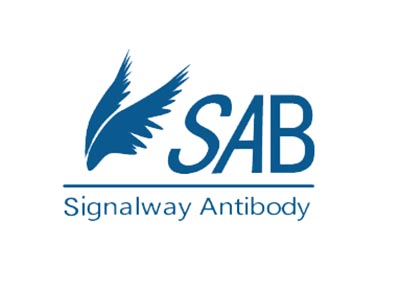Product Detail
Product Namebeta-Amyloid 1-42 Antibody FITC Conjugated
Host SpeciesRabbit
ClonalityPolyclonal
IsotypeIgG
PurificationPurified by Protein A.
ApplicationsFlow-Cyt IF
Species ReactivityHu Ms Rt
Immunogen DescKLH conjugated synthetic peptide derived from human beta-Amyloid(35-42)
Target Namebeta-Amyloid 1-42
ConjugateFITC
Excitation Emission494nm 518nm
Other NamesAAA; AD1; PN2; ABPP; APPI; CVAP; ABETA; PN-II; CTFgamma; Amyloid beta A4 protein; APP; Alzheimer disease amyloid protein; Amyloid precursor protein; Beta-amyloid precursor protein; Cerebral vascular amyloid peptide; PreA4; Protease nexin-II; A4
Accession NoSwiss-Prot#P05067
NCBI Gene ID351
Uniprot
P05067
Gene ID
351;
Concentration1mg ml
Formulation0.01M TBS(pH7.4) with 1% BSA, 0.03% Proclin300 and 50% Glycerol.
StorageShipped at 4˚C. Store at -20˚C for one year. Avoid repeated freeze/thaw cycles.
Application Details
Flow-Cyt=1:50-200 IF=1:50-200
Functions as a cell surface receptor and performs physiological functions on the surface of neurons relevant to neurite growth, neuronal adhesion and axonogenesis. Involved in cell mobility and transcription regulation through protein-protein interactions. Can promote transcription activation through binding to APBB1-KAT5 and inhibits Notch signaling through interaction with Numb. Couples to apoptosis-inducing pathways such as those mediated by G(O) and JIP. Inhibits G(o) alpha ATPase activity (By similarity). Acts as a kinesin I membrane receptor, mediating the axonal transport of beta-secretase and presenilin 1. Involved in copper homeostasis oxidative stress through copper ion reduction. In vitro, copper-metallated APP induces neuronal death directly or is potentiated through Cu(2+)-mediated low-density lipoprotein oxidation. Can regulate neurite outgrowth through binding to components of the extracellular matrix such as heparin and collagen I and IV. The splice isoforms that contain the BPTI domain possess protease inhibitor activity. Induces a AGER-dependent pathway that involves activation of p38 MAPK, resulting in internalization of amyloid-beta peptide and leading to mitochondrial dysfunction in cultured cortical neurons. Provides Cu(2+) ions for GPC1 which are required for release of nitric oxide (NO) and subsequent degradation of the heparan sulfate chains on GPC1. Beta-amyloid peptides are lipophilic metal chelators with metal-reducing activity. Bind transient metals such as copper, zinc and iron. In vitro, can reduce Cu(2+) and Fe(3+) to Cu(+) and Fe(2+), respectively. Beta-amyloid 42 is a more effective reductant than beta-amyloid 40. Beta-amyloid peptides bind to lipoproteins and apolipoproteins E and J in the CSF and to HDL particles in plasma, inhibiting metal-catalyzed oxidation of lipoproteins. Beta-APP42 may activate mononuclear phagocytes in the brain and elicit inflammatory responses.
If you have published an article using product C00059F, please notify us so that we can cite your literature.



 15 business days.
15 business days.



